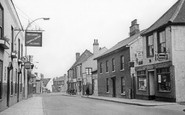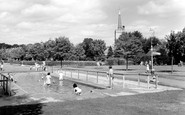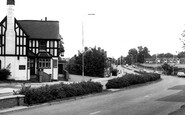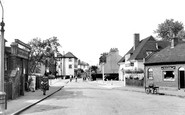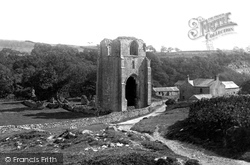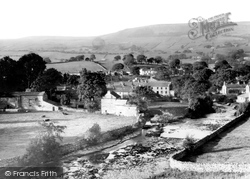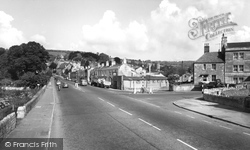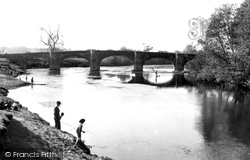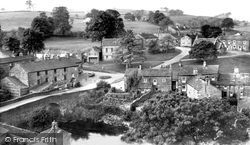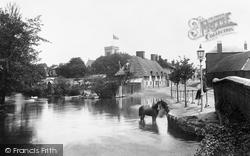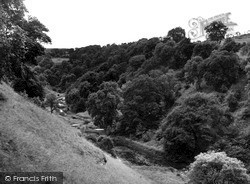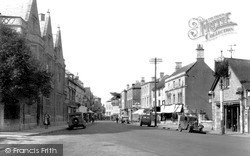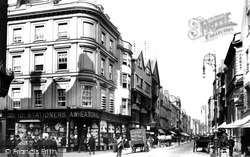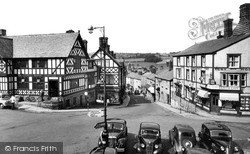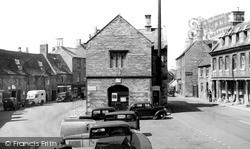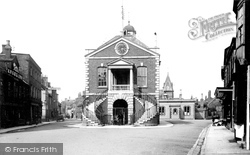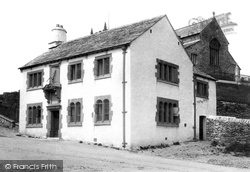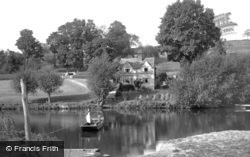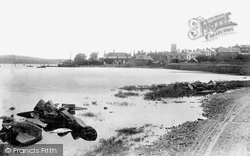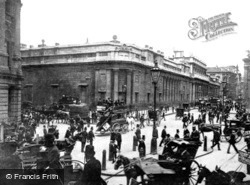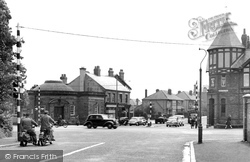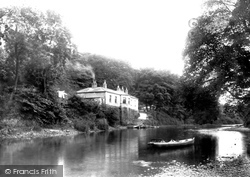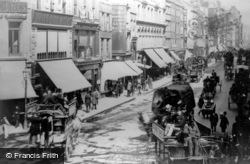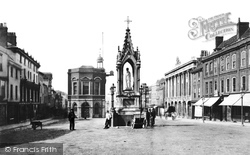Places
3 places found.
Those places high-lighted have photos. All locations may have maps, books and memories.
Photos
68 photos found. Showing results 101 to 68.
Maps
12 maps found.
Books
15 books found. Showing results 121 to 15.
Memories
7,562 memories found. Showing results 51 to 60.
Aveley Village A Special Place
Year ranges from 1961 to present really. My nan and grandad lived in Aveley, the Harmans, in Central Avenue. I have fond memories of staying with my nan and grandad, and the house in Central Ave, and across the road ...Read more
A memory of Aveley in 1963 by
St Day Evacuee Lost Memories
I too was one of the London evacuees taken to St Day school to be selected by a villager; Miss Murton a shop owner took me into her home. Miss Murton gave up her shop with the rationing and coupon counting. Can anyone ...Read more
A memory of St Day in 1940 by
Peace And Open Spaces
I remember opening my front door and looking around at the beautiful views I could see. I could walk 100 yards in any direction and be in fields. The peace and quiet, and the views were outstanding. It took my breath away. I ...Read more
A memory of Holmfirth in 1980 by
Mountnessing School
I was at school in the 1940s. I remember a teacher there, I believe he was a Mr Davis. I remember the annual sports, these were held on a field just a short walk from the school. The days of the great snow fall in 1947, ...Read more
A memory of Mountnessing in 1940 by
Big Toe Stuck In The Drain...Lol
I remember this paddling pool so well, when I was about 8 years old I would be there with my nana {in fact in looks like me in the pic}. She would sit on the bench in the pic and eat her rich tea biscuits. I begged ...Read more
A memory of Newmarket by
Early Memories
My birth on 30 Nov 1946 at 34 Oldberry Road, Burnt Oak, is where it all started for me, but my mother & her parents moved into the house when it was built for the LCC. She's 89 now, but recalls that she, as a 9-yr-old in 1928, ...Read more
A memory of Burnt Oak in 1946 by
The Fox And Goose Public House
Hello from Australia. I was hoping that someone looking through these "memories" might remember The Fox and Goose Public House on Penn Road. I think that this is the picture of it. My mom was the cleaner ...Read more
A memory of Penn by
A Ham Family
My mother and father lived in Evelyn Road - the cul-de-sac opposite the large white house in the distance - mother still there - lived in two of the houses for all her eighty years - married the boy next door (well.. at the top of the cul- ...Read more
A memory of Ham in 1955 by
Doe Lea In Ww2
I arrived in Doe Lea in June 1940 with other evacuees from Lowestoft, Suffolk. I lived in Doe Lea untill 1944. At first we were not accepted by the local children, eventually we mingled and became friends, since the war have been ...Read more
A memory of Doe Lea in 1940 by
Memories Of The Red Lion
I was born in 1966 and lived in the Red Lion. My dad and mum were married in 1961. My dad lived in the village all his life, moving to the Red Lion on his marriage. My dad was formerly of Temperance Hall, down the road ...Read more
A memory of Wareside in 1966 by
Captions
2,501 captions found. Showing results 121 to 144.
Shap Abbey, near the banks of the River Lowther, was founded by the 'white canons' of the Premonstratensian order at the end of the 12th century, but it was dissolved, like so many others, in 1540
Just down in the dale from Askrigg, on the banks of the River Ure, stands the ancient village of Bainbridge, once the capital of Upper Wensleydale, which was known in the 12th century as the Forest and
Further downhill, at Fiveways, the road on the right is Fosse Lane. Here the Roman Fosse Way climbs out of the Avon valley to cross Banner Down on its way to Cirencester, the Roman town of Corinium.
Boys stand in their boats and paddle near the rapids, while others fish around on the bank without a concern in the world, as boys have probably done here for centuries.
After 50 years, very much as one would expect, with the exception that one of the pine trees has been removed.
The pretty village of Bainbridge, centred on its extensive green, stands on the banks of the River Ure (foreground).
This turn of the century photograph shows a thatcher busy at work on the roof of a picturesque cottage on the banks of the River Avon, which flows serenely through Ringwood on its way to Christchurch
The wooded slopes of Middleton Dale, west of the village of Youlgreave and near the hamlet of Middleton-by- Youlgreave, offer a tranquil walk in beautiful surroundings by the banks of the frequently-weired
The Kings Arms Hotel (right), built in 1750, was a stop for the changing of horses and the collection of post on the London to Bristol route.
Exeter was the furthest west that the Romans ventured. They halted on the banks of the Exe in about 50AD and founded the town of Isca.
Here we see the south side of Wimborne's square at a time when the bank was called the Midland. This, with the nearby Minster, was the heart of the town.
Set on the banks of the River Yare, Cantley is dominated by its sugar refinery, which was built to process local beet.
The hillside town of Ruthin retains its medieval origins, although the aggressively black and white mock-Tudor half-timbering of the bank and outfitters' buildings on the left is perhaps a little over
The Victorian Town Hall in the centre of the Market Place was built by the Watts-Russell family; today it is occupied by local businesses.
Here we see the south side of Wimborne’s square at a time when the bank was called the Midland. This, with the nearby Minster, was the heart of the town.
The main facade of Trinity College stands on the right with its statues by Foley of famous alumni Edmund Burke and Oliver Goldsmith, while on the left is the Bank of Ireland.
William Wordsworth must have looked out from these mullioned windows of the ancient Grammar School, where he was educated between 1779 and 1787.
Evesham is a good place to begin an exploration of the Vale around, the River Avon and the not too distant Cotswolds.
Tamar barges, such as the one moored here at the quay, were once a common sight on the Tamar and the Tavy.
Opposite the Mansion House is the Bank of England, a single-storey monolithic edifice, designed in 1734 by George Sampson.
The crossroads pictured here are on the Woodchurch Road near Prenton.
The famous spring was discovered on the banks of the Wharfe by labourer John Shires on 4 June 1744. From then on, visitors flocked to the town to enjoy the benefits of its health-inducing treatments.
In the 1850s, Cheapside was one of the most fashionable shopping streets in London, with a ‘mighty stream of traffic’ flowing through from Oxford Street to Leadenhall and the City.
The county town of Kent stands on the banks of the River Medway. The oldest building, the Bishop's Palace, fronts the river beside the great medieval church of All Saints.
Places (3)
Photos (68)
Memories (7562)
Books (15)
Maps (12)

